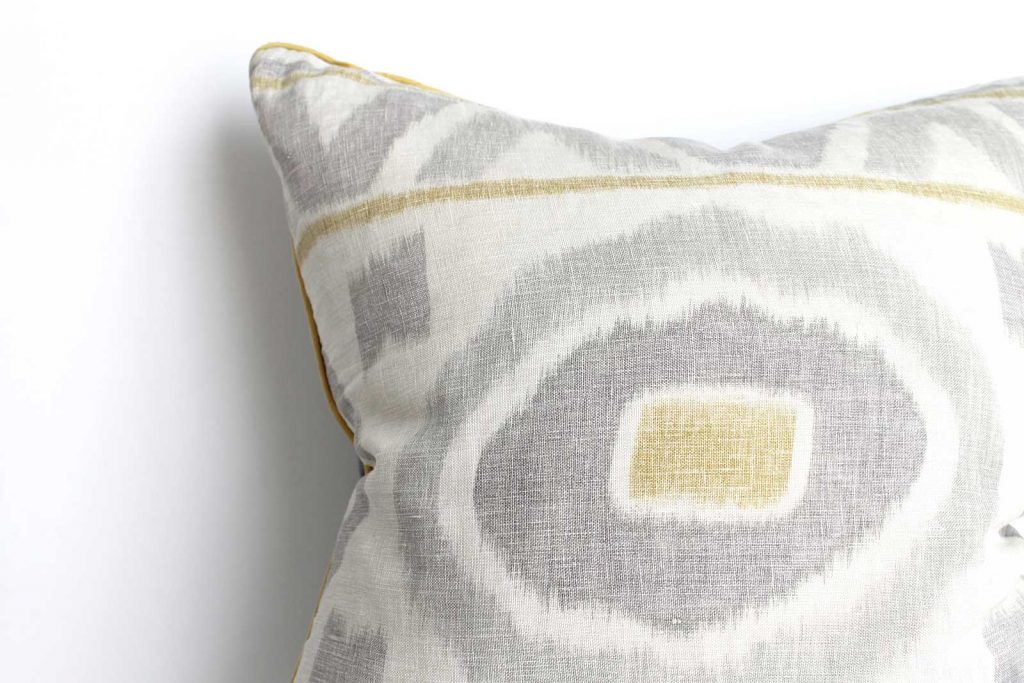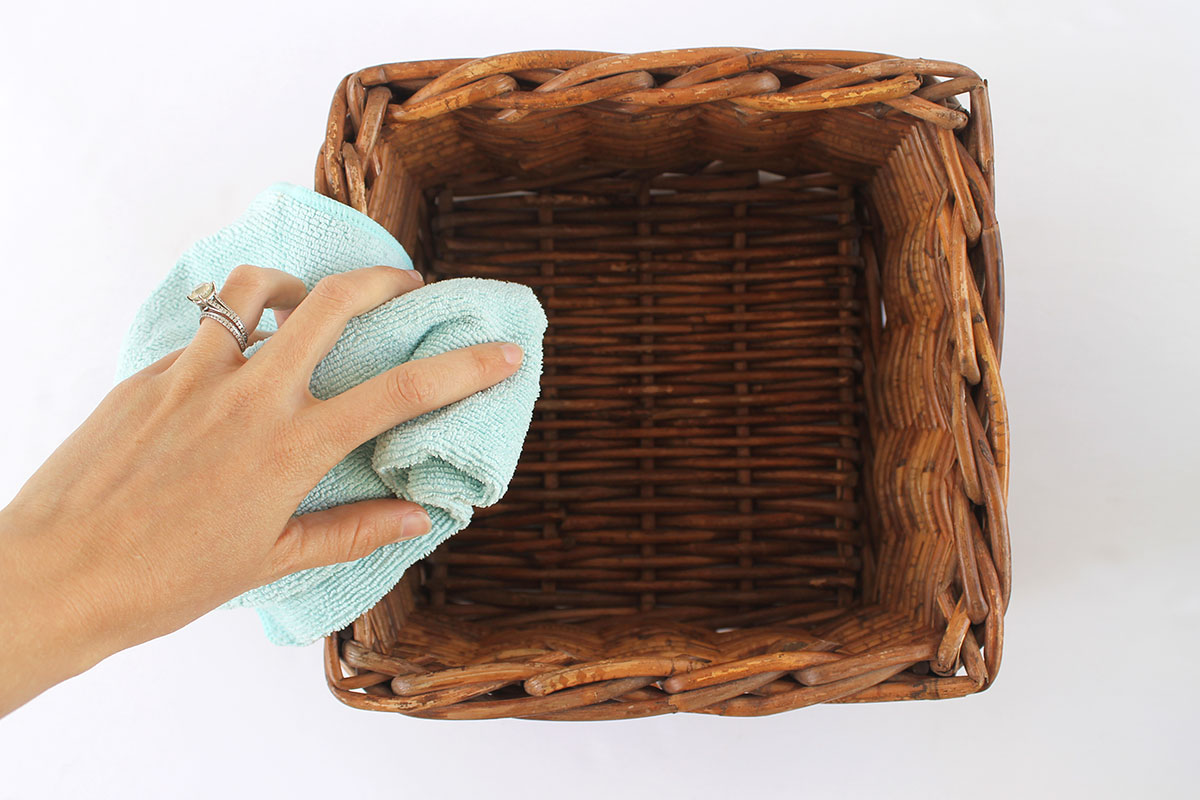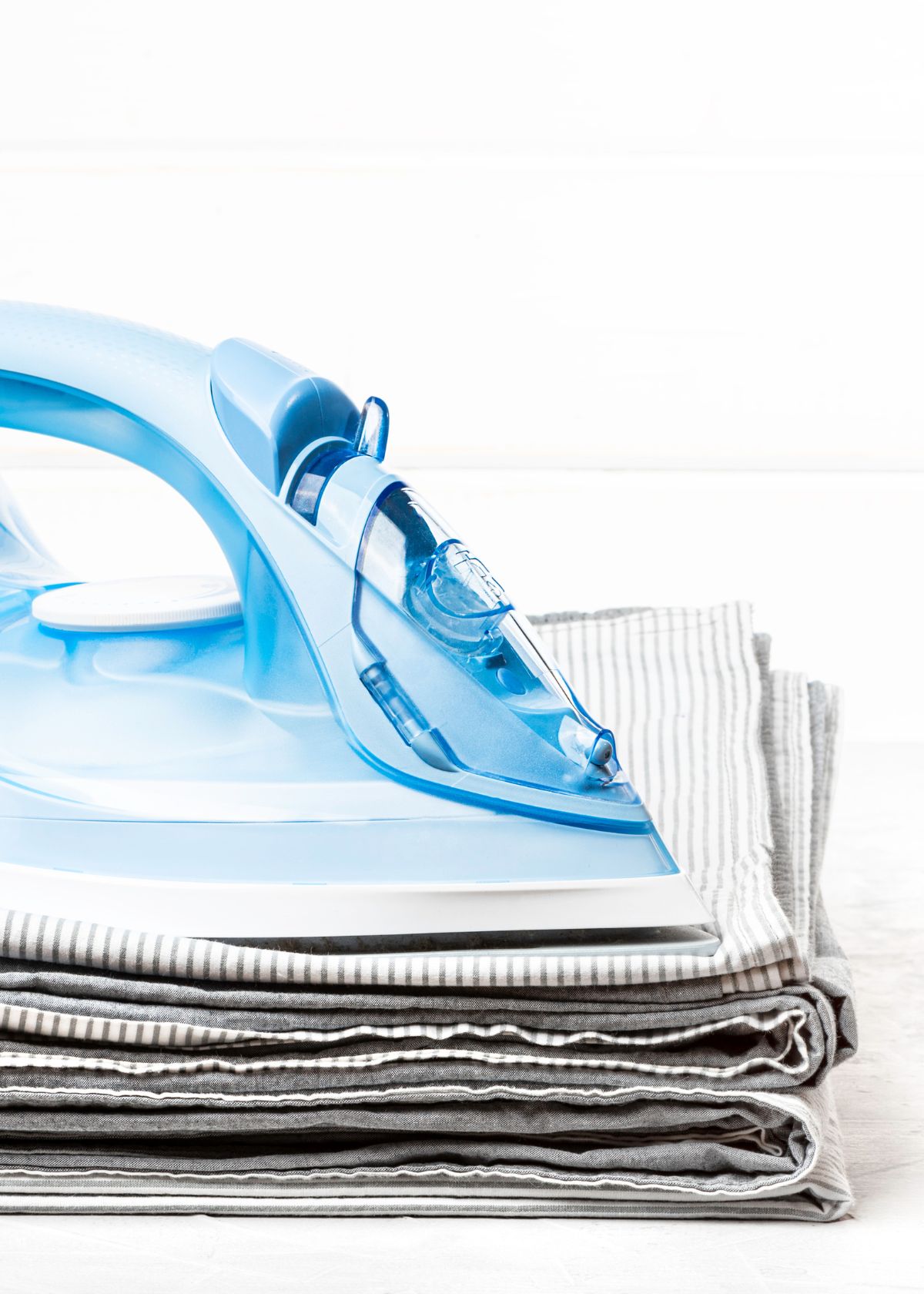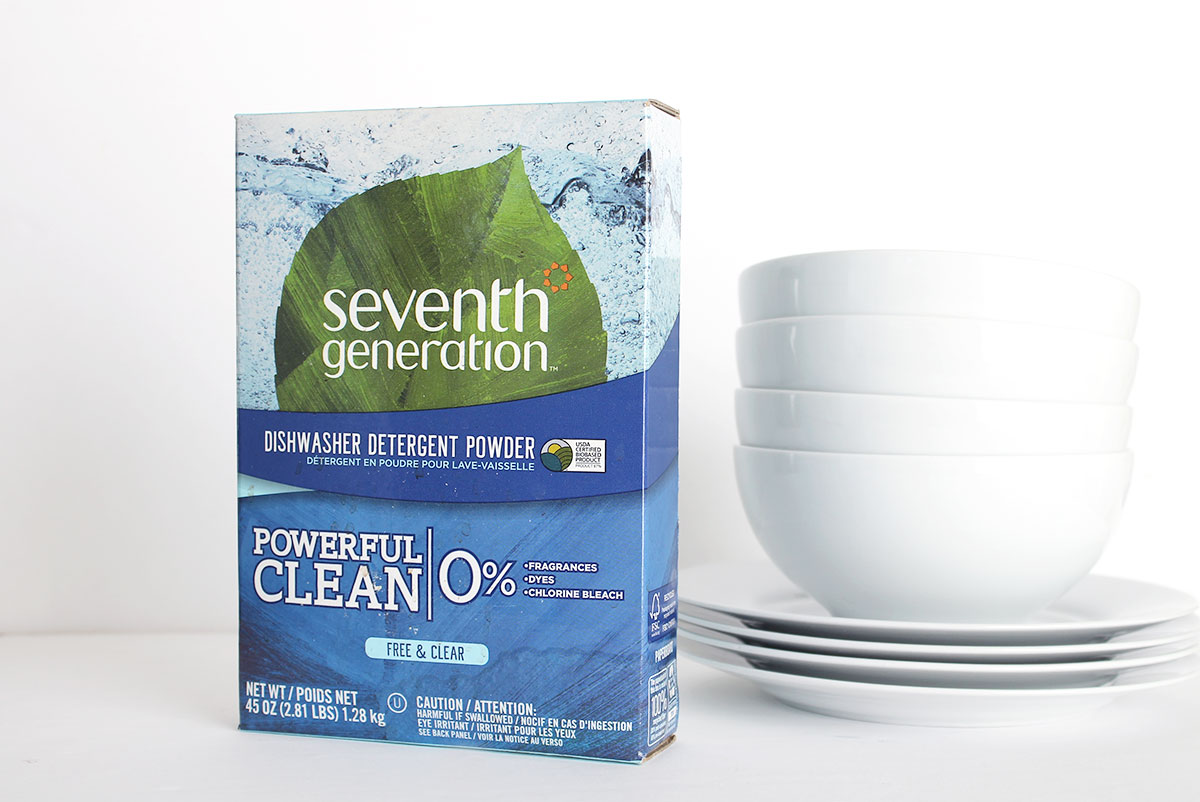How to Clean Throw Pillow Inserts

Do you know how to clean throw pillows? I don’t know why I was surprised when I learned that I am supposed to wash my throw pillow inserts. I guess I always assumed that washing the pillow cases was enough! It does make sense that over time dust, sweat, and oil buildup will seep through a pillowcase and onto the actual pillow – enough to convince me that a twice yearly washing is necessary!
Throw Pillow Cleaning Tools and Products:
- Detergent – Good options include: Seventh Generation, The Laundress, ECOS
- Tennis Balls & Socks or Dryer Balls (Curious about these? More information here!)
Why You Need to Wash Throw Pillows
Chances are, you’re good about cleaning your pillow cases. They tend to show dirt and stains a lot easier than the actual pillow underneath. But here’s the thing—those pillows need some TLC too!
Over time, pillows accumulate dust, dry skin, and sweat. This build-up can cause your pillows to smell or loose their shape. According to a study by Dow Polyurethanes, one-third of your pillow’s weight may contain dead skin, bugs, and dust mites. Pretty gross, right? Not only that, but the study also reported that 10% of people and 80% of allergy sufferers are allergic to the proteins found in dust mites. Regularly washing your pillow will both extend its lifespan and protect your health.
Types of Throw Pillow Inserts
Down
Down pillows are made from animal products, specifically feathers from geese and ducks. Unlike pillows that are filled with man-made fibers, down pillows can be easily re-cased if you choose to. One of the main benefits of using a down pillow is that it forms to the curve of your head and neck, providing customized support. They also breathe easily and allow airflow around the head and neck. With proper care and cleaning, down pillows can last up to 20 years. If you ever want to store a down pillow, make sure you pack it in a breathable bag. Plastic storage bags will trap moisture, thereby increasing your chances for mildew.
Synthetic
Synthetic is the most common pillow filling, specifically polyester. Polyester pillows are often the least expensive and are lightweight, soft, and machine-washable. You can purchase synthetic pillows in an array of different firmness levels. However, they’re not quite as good at regulating temperature, and don’t often breathe well. You should replace your synthetic pillow once every two years.
Foam
Most foam or memory foam pillows are made from polyurethane, which is made of two main chemical components (polymers and urethane) that are linked together by urethane groups, creating a versatile solution that can take many forms. Because of their chemical compounds, these pillows tend to be highly flammable and are not environmentally friendly. If you do own a foam pillow, you can easily hand-wash it, but we do not recommend putting it in a washing machine.
Cotton
Cotton pillows are completely natural, free from synthetic materials, and are hypoallergenic. Unlike polyester, cotton pillows stay cool against the skin. We’d recommend organic cotton pillows if you’re sensitive to chemicals that may be in synthetic pillows. You can easily wash cotton pillows in a washing machine as well. But because Cotton holds a lot of moisture, it takes much longer to dry than polyester, and the shape or feel of the pillow may change.
Overall, the most sustainable pillow materials include organic cotton, recycled polyester pillows, recycled wool pillows, recycled cotton pillows, buckwheat hull pillows, hemp pillows, and tencel pillows. You can learn more about these types of pillows by clicking here.
How to Clean Throw Pillows
How to Wash Down, Cotton, or Synthetic Fiber-Filled Pillows
Before placing into the washing machine, remove all pillowcases and read the labels on your pillows to make sure that they are cotton, down, or synthetic material. Memory foam pillows should be spot cleaned and if necessary washed by hand in a tub, rinsed thoroughly and air dried flat.
Tools and Materials:
- Detergent – Good options include: Seventh Generation, The Laundress, ECOS
- Tennis Balls & Socks or Dryer Balls (Curious about these? More information here!)
Instructions:
- If your pillows are machine washable, it’s recommended to put two pillows in the washer at a time (especially if your washing machine is a top load style with a middle agitator) so that they aren’t spun around too aggressively. You can use your regular detergent for this but make sure your settings are on warm water with a second cold rinse cycle. You’ll want your washing machine to be as clean as possible before this step, so be sure you’ve given it a good wash.
- When it’s time to dry, throw the pillows into your dryer with two tennis balls wrapped in white socks (to prevent the color of the tennis balls from bleeding onto your pillows). The tennis balls will help fluff the pillows back to their original shape. Be sure to clean the dryer lint screen beforehand.
- No matter how you wash your pillows make sure that they are completely dry before returning them to their pillowcases.
- Lastly, you can test for whether or not it’s time to replace your pillow by folding it in half. If the pillow bounces back open then it’s still worth hanging on to, if the pillow remains folded in half, it might be time for pillow shopping.
Now we can all rest easy knowing our faces will be laying on clean, fluffy pillows!
How to Wash Foam Pillows
Tools and Materials:
- Bathtub or Large Basin
- Detergent – Good options include: Seventh Generation, The Laundress, ECOS
Instructions:
- Fill up a sink, bathtub, or large basin with lukewarm water.
- Add in a tiny amount of gentle detergent (less than 1 tsp per gallon of water).
- Slowly submerge your foam pillow into the soapy water. Gently squeeze the pillow, which will allow the detergent to penetrate the pillow. Repeat this step twice.
- Drain soapy water from your tub or basin and refill with clean water.
- Squeeze your pillow several times in the clean water to wash away any remaining dirt or soap. Repeat this step until the water runs clear.
- Drain all water from your tub or basin, then gently squeeze your pillow to remove excess water. Don’t twist or rigorously squeeze the foam.
- Leave your pillow to air dry, preferably in direct sunlight outdoors.
How Often Should You Clean Throw Pillow Inserts?
Pillow covers should be washed every two to four weeks depending on how often you use them. Throw pillow inserts, however, should be washed anywhere between 2-6 times a year depending on how often they’re used. This applies to all forms of pillows.
How Often Should Throw Pillows be Replaced?
The rule of thumb is to replace your bed pillow every one to two years. Certain types of pillows last longer than others, due to the quality and construction of their materials. For foam pillows specifically, you can replace every 18-36 months.
With that said, throw pillows can last you much longer than this because they aren’t often used as heavily. When will you know it’s time to replace them? Here are a few signs to watch for:
- Noticeable lumps in the foam or filler materials
- Permanent stains from body sweat and oil
- Find yourself regularly sneezing from dust mites or other allergens
- You constantly have to re-fluff your pillow to get comfortable (this really only applies to feather pillows).
RELATED: What to do with Old Pillows / How to Spot Clean Decorative Pillows






